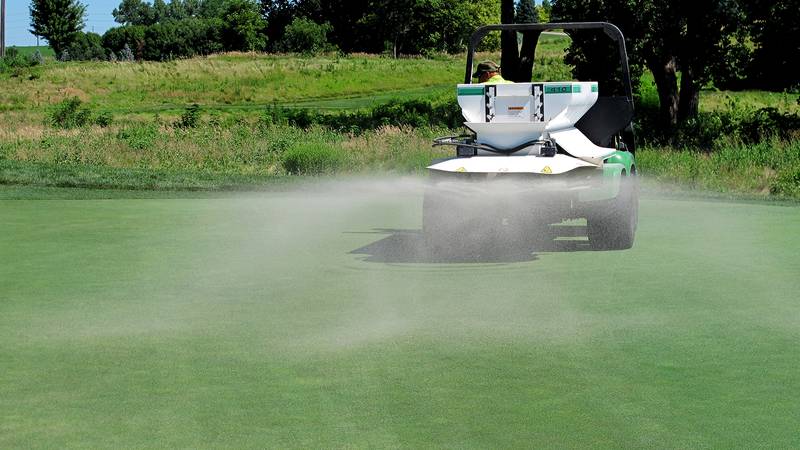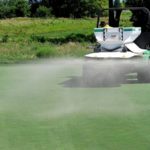Topdressing and Quality Greens

After sand topdressing is applied, it is common to hear reactions like, “The putting greens were perfect, why did the superintendent need to apply sand to them?” Remember, although some agronomic practices such as topdressing can temporarily impact playability, they are implemented for a reason – to produce the best possible putting surfaces.
Topdressing improves putting greens smoothness, increases firmness and dilutes thatch. Thatch is a layer of dead and living plant material just below the turf surface. A small amount of thatch helps putting greens receive shots and withstand traffic, but an excessive amount results in soft conditions, deep ball marks, foot printing, undesirable putting conditions and a host of agronomic issues. Topdressing to dilute thatch as it accumulates is necessary to maintain firm, smooth and healthy putting greens.
Topdressing requirements depend on several factors including the play volume at the course and how quickly the turf is growing. Turf species and weather are major factors that affect growth rate, but inputs such as fertility and moisture also play a major role. For instance, if the course receives a lot of play, the putting greens may need to be growing rapidly to recover from ball marks and traffic. Rapid growth creates more thatch and therefore requires more topdressing. The best topdressing programs account for these dynamic factors that are unique at each facility.
The frequency of topdressing also determines how much sand is needed for each application. Frequent topdressing often allows for a low amount of sand for each application, resulting in minimal disruption to ball roll. Infrequent topdressing means that a higher amount of sand must be used for each application to offset thatch accumulation, creating more disruption to playing conditions. Infrequent applications also lead to the formation of layers in the soils, which is concerning because layers can hold moisture following rain or an irrigation event.
A light and frequent topdressing program produces the best results, but sometimes it is necessary to postpone an application during severe heat. Turf that is already weakened by environmental stress is extremely vulnerable to damage from the abrasion that occurs when sand is brushed into the surface after topdressing. Accounting for weather disruptions and allocating enough time for staff to topdress the putting greens is vital to the success of each application and the health of the turf.
Topdressing will always be a topic of discussion because it occasionally disrupts play. Superintendents try to schedule topdressing applications when fewer rounds are expected; however, agronomics must take precedence over short-term playability to maintain quality playing conditions. Reducing or eliminating topdressing applications may seem like a way to improve golfer satisfaction and reduce expenses, but the consequences would have the opposite effect. Topdressing may create some short-term challenges, but the improvements in putting green smoothness and turf performance are key reasons why sand is applied regularly at your course.
